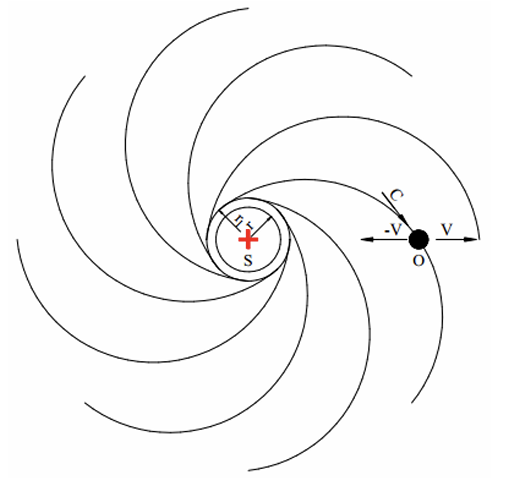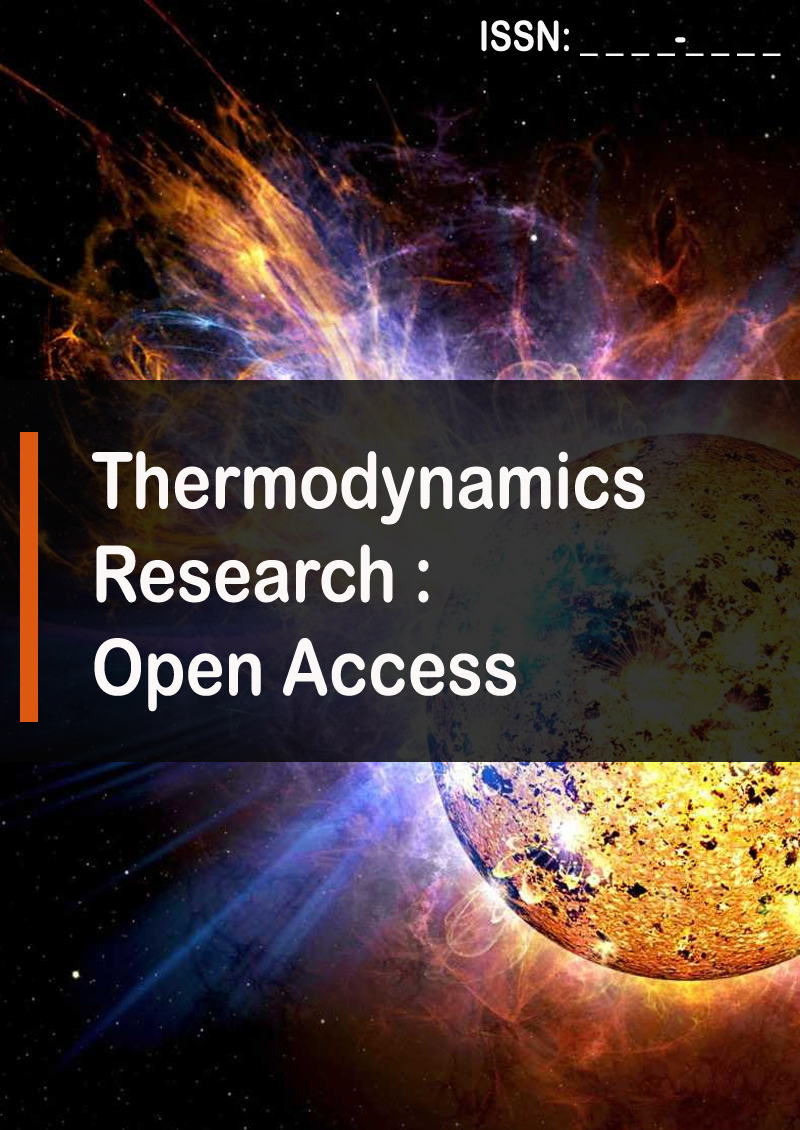Research Article - (2024) Volume 1, Issue 1
Explaining the Invariance of The Speed of Light
Received Date: Jun 28, 2024 / Accepted Date: Jul 09, 2024 / Published Date: Jul 17, 2024
Copyright: ©2024 Orlov Sergey Alexandrovich. This is an open-access article distributed under the terms of the Creative Commons Attribution License, which permits unrestricted use, distribution, and reproduction in any medium, provided the original author and source are credited.
Citation: Alexandrovich, O. S. (2024). Explaining the Invariance of The Speed of Light. Ther Res: Open Access, 1(1), 01-03.
Abstract
new physical model of the appearance of light, properties, and its trajectory. The theory explains the paradox of invariance and isotropy of light based on the laws of classical physics
Introduction
For many years, scientists - physicists have tried to measure the speed of light. Galileo - in the seventeenth century. The first experiment to measure the speed of light was held Ole Roemer, a Danish physicist, in 1676. Hippolyte Fizi proposed a more accurate method for measuring the speed of light in Europe in 1849. Scientist Francois Arago determines the speed of light in 1838 by a rotating mirror. In 1862, on the production of the speed of light worked Leon Foucault. Albert Michelson [1] determined the speed of light with high accuracy in 1926: Ñ = 299 796 000±4 000 m/s.
The main conclusion of the study was the invariance of the speed of light. That is, the speed of light is the same in all inertial frames of reference and does not depend on the speed of the observer and the emitter. This amazing fact was first proven by Michelson's experiment: the independence of the speed of light from direction (isotropic) and the orbital motion of the Earth around the sun. In the future, this paradox was confirmed by astronomers. Willem de Sitter in monitoring the spectral binaries found that the speed of light flux from removing the stars and approaches are constant speed of light (c) and equal to each other. That is, they do not depend on the speed of the star [1]. Based on the laws of classical physics, this paradox cannot yet be proven. That is, they do not depend on the rate of the star [2]. From the point of view of classical physics this paradox so far can’t be explained. Based on this property of light in 1905, Einstein proposed the special theory of relativity (STR) in the paper "On the Electrodynamics of Moving Bodies". SRT conclusions were as paradoxical as the invariance of light [3].
On the basis of the SRT can assert that events in different inertial frames of reference will have different timings if these frames of reference are moving relative to each other. This article explains the origin, properties and immutability of light based on the laws of physics and the theory of vortex gravity, cosmology and cosmogony [4].
Luminiferous Ethez
The theory of vortex gravity, cosmology and cosmogony proves that all celestial bodies (matter) are created by ethereal vortices. The sizes of bodies and ethereal vortices vary by infinite amounts. The biggest ethereal vortex that people can watch this universal whirlwind, the smallest – atomic. The orbital speed of the ether in each vortex decreases in the direction from the center to the periphery of the vortex. The speed of orbital rotation decreases in inverse proportion to the square of the orbital radius.
Change of orbital velocity is inversely proportional to the pressure change in the air. Pressure gradient force creates vortex gravitation. This pattern works the same in vortices of different volumes [4]. In Thoery, the vortex gravitation obtained an equation to determain the gravitational forcein the etheric vortex:(1),

V - volume of the nucleons in the body, which is in torsion
ρ = 8.85 × 10-12 kg / m3 - the density of ether
v(r) - velocity of ether in the orbit r
r - the radius of the orbit is risen ether vortex.
The same relationship between the force of gravity and orbital velocity exists in atomic torsion (vortex). Each atomic vortex ether rotation occurs continuously around the core with a radius r, which creates the effect of an atomic attraction. For this scheme, gravity can explain the origin of the interatomic forces of attraction. Ether permeates any substance except atomic nuclei (nucleons). The speed of ether exceeds the speed of light by several orders of magnitude [5].
The assumption â?? 1. Under the action of attractive forces on the surface of the atom or on surface of nucleus of the atom ether stream is converted into an electromagnetic flux including a light. The light has mass. Gravity act on the light. Since particles of light (photons) acquired mass, they slowed down their speed. Thus, the light gets its velocity - c. The magnetic flux (of light) around an atom is affected by two forces: the force of vortex attraction of atoms and the centrifugal force.
For uniform orbital motion of light, it is necessary that the orbital speed of photons create a centrifugal force equal to the force of atomic attraction. This rate is equal to the atomic orbit well-known speed of light - (c). In aerodynamics, this speed is called the first escape velocity. The atomic attraction is generated by the pressure gradient in the atomic vortex (uravn.4). The pressure gradient is the difference of pressure values in free ester stationary and the center of the vortex. In a free state, the pressure is always constant and maximum. In the center of vortex, the pressure of ether depends on the rotational speed and temperature. If a substance (atom) is heated, then the pressure (P) of the atom in the center increases in proportion to the temperature (T), in accordance with Charles’s law [6].
T ~ P (2)
Then the pressure gradient decreases and, in accordance with equation (1), the force of attraction of the vortex decreases. In this case, the centrifugal forces Fc exceed the forces of atomic, vortex attraction Fn. The speed of light is converted into the second cosmic speed. Light moves away from the atom along the most economical spiral trajectory according to the calculations of Walter Hohmann [7]. The place of the departed light stream is taken by a new stream of ether. This stream is the same principle is converted into light. If the external effects (heating) is stored, the conversion and emission light from the atom will continue permanently. This is the nature of light. Light is created not by the energy or mass of matter (atoms), but only by the transformation of ether into light under the influence of atomic vortex gravity and external influences (temperature). The cessation of light emission occurs when the external influence (heating) on the atom ceases or the atom, and with it the atomic vortex, is destroyed. Figure 1 shows the movement of light in an atomic torsion bar.

Figure 1. S - light source (the atom), O - observer, r - radius of the atom, rl - the radius of the orbit of light flow in a calm state, prior to heating (at orbital velocity), v - relative speed of retreat or approach between the observer O and the light source S. c - velocity of light vector.
Fig. 1 shows: the observer (O) to move relative to the light source (S) with a speed v; light flux from the atom which trajectory intersects the observer (O) at a large angle. Consequently, the speed of light relative to the observer (O) is equal to the absolute speed of light - c. Observer speed (v) with respect to the light source can not change the rate of arrival of light (c) to the observer.
Figure 1 shows an aerodynamic diagram of the movement of a light flux from one atom. When light is emitted from many atoms, the aerodynamic scheme does not fundamentally change, but is only multiplied many times over. Light will always flow to the observer along the same helical trajectory (at a large angle to the radius of the light field) with its constant speed - v. Spiral light fluxes from these atoms can twist in different directions. The orbital planes of light fluxes are located in space with any inclinations from each other. Thus, light is an infinite collection of ultra-small, spiral filaments. These streams are combined into a single spherical light field. Since the radius and circumference of the light field are directly proportional, the light field increases radially, also at the speed of light. When the observer moves in any direction, the light flux will always arrive at the observer at a right angle, maintaining its speed of light - c. A luminous flux directed along an infinite number of spiral trajectories creates isotropy.
Conclusion. Equate the speed of light (b) to the speed of anybody (S). (v) in space is possible only according to the laws of vector algebra. Relative movement of any other body in space, light always moves at a right angle. Therefore, the relative speed of light reaching anybody will always be equal to the absolute speed of light, regardless of the speed of movement of the point under consideration (O) relative to the light source (S).
Mathematically this can be written:

Conclusions
The concept of the luminiferous ether was launched in the XVII century Rene Descartes. In the future, the wave theory, the luminiferous ether developed in the writings of Huygens. A detailed justification for this theory was developed by Maxwell in the 19th century within the framework of wave optics and electromagnetic theory. The proposed spiral model of light flux is very close to the concept of wave motion of light and differs only in the trajectory of the light flux. The movement of the light flux does not contradict the laws of classical physics. Invariance was introduced into scientific consideration because the movement of light was (erroneously) taken as a direct and radial flow. In the spiral model of the origin and movement of light, this task is not difficult, since the impulse of movement the light flow received from the ether, which moved at a speed exceeding the speed of light. When determining the speed of light, researchers added up the speed modules. In reality, you need to add the vectors of these velocities. The movement of the luminous flux is not contrary to the laws of classical physics. Invariance was introduced into scientific consideration only because of a misunderstanding of the movement of light as straight and radial [8-10].
References
1. Michelson, A. A. (1881). ART. XXI.--The relative motion of the Earth and the Luminiferous ether. American Journal of Science (1880-1910), 22(128), 120.
2. Koninklijke Academie van Wetenschappen - te Amsterdam, 15, 1297 (1913)
3. Einstein, A. (1905). Zur elektrodynamik bewegter körper. Annalen der physik, 17(10), 891-921.
4. Orlov, S. (2011). Foundation of vortex gravitation, cosmology and cosmogony. LAP LAMBERT Academic Publishing.
5. Atsurovskiy. General ether-dynamics. Energoatomizdat. Moscow, Russia. 1990. Page 278. research. Physic and Space Science Volume 12 issue 1 Version 1.0 January 2012
6. Castka, Joseph F.; Metcalfe, H. Clark; Davis, Raymond E.; Williams, John E. Modern Chemistry. — Holt, Rinehart and Winston, 2002. — ISBN 0-03-056537-5
7. Walter Hohmann. Die Erreichbarkeit der Himmelskorper. — Verlag Oldenbourg in Miinchen, 1925. — ISBN 3-486- 23106-5.



